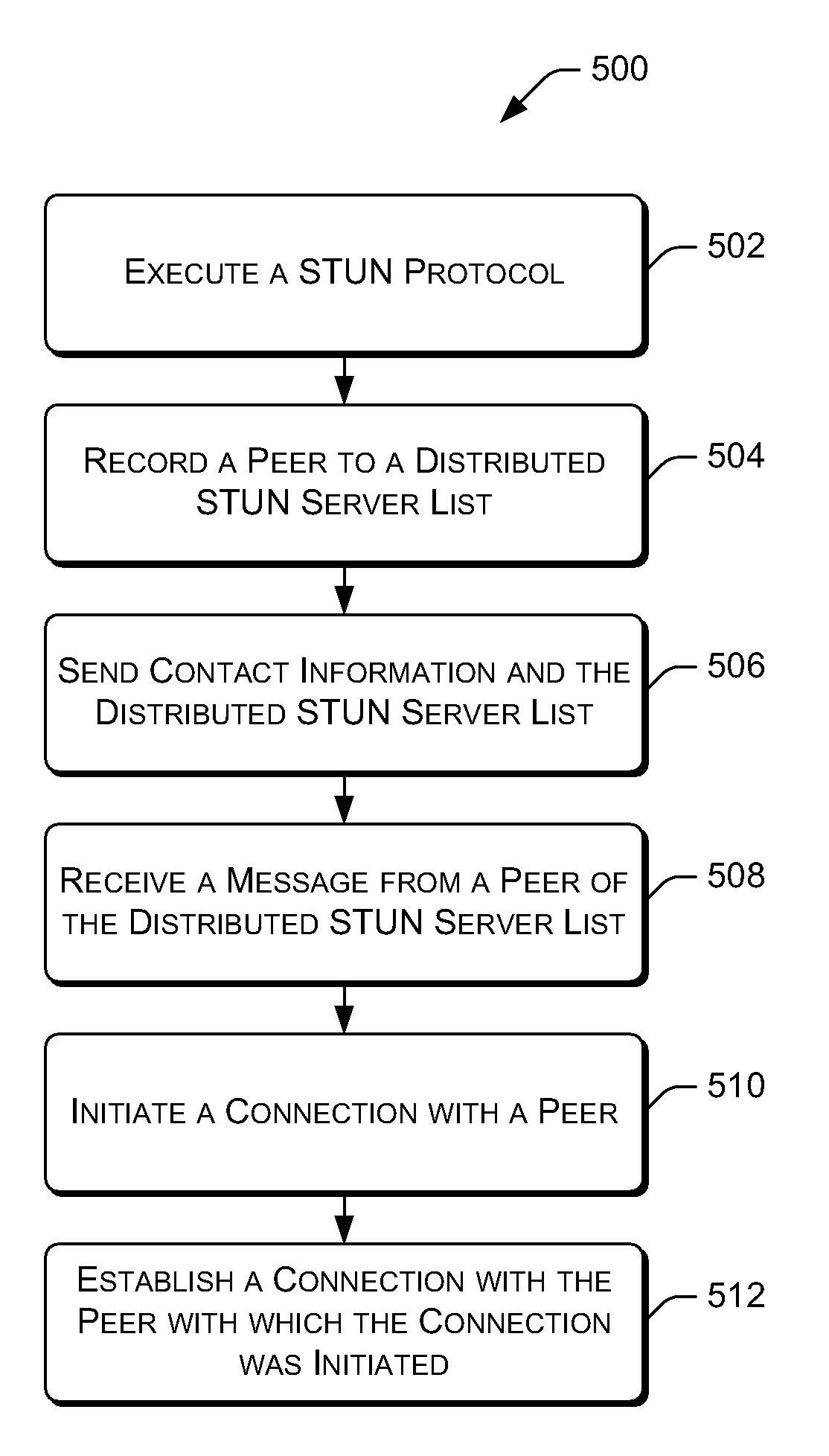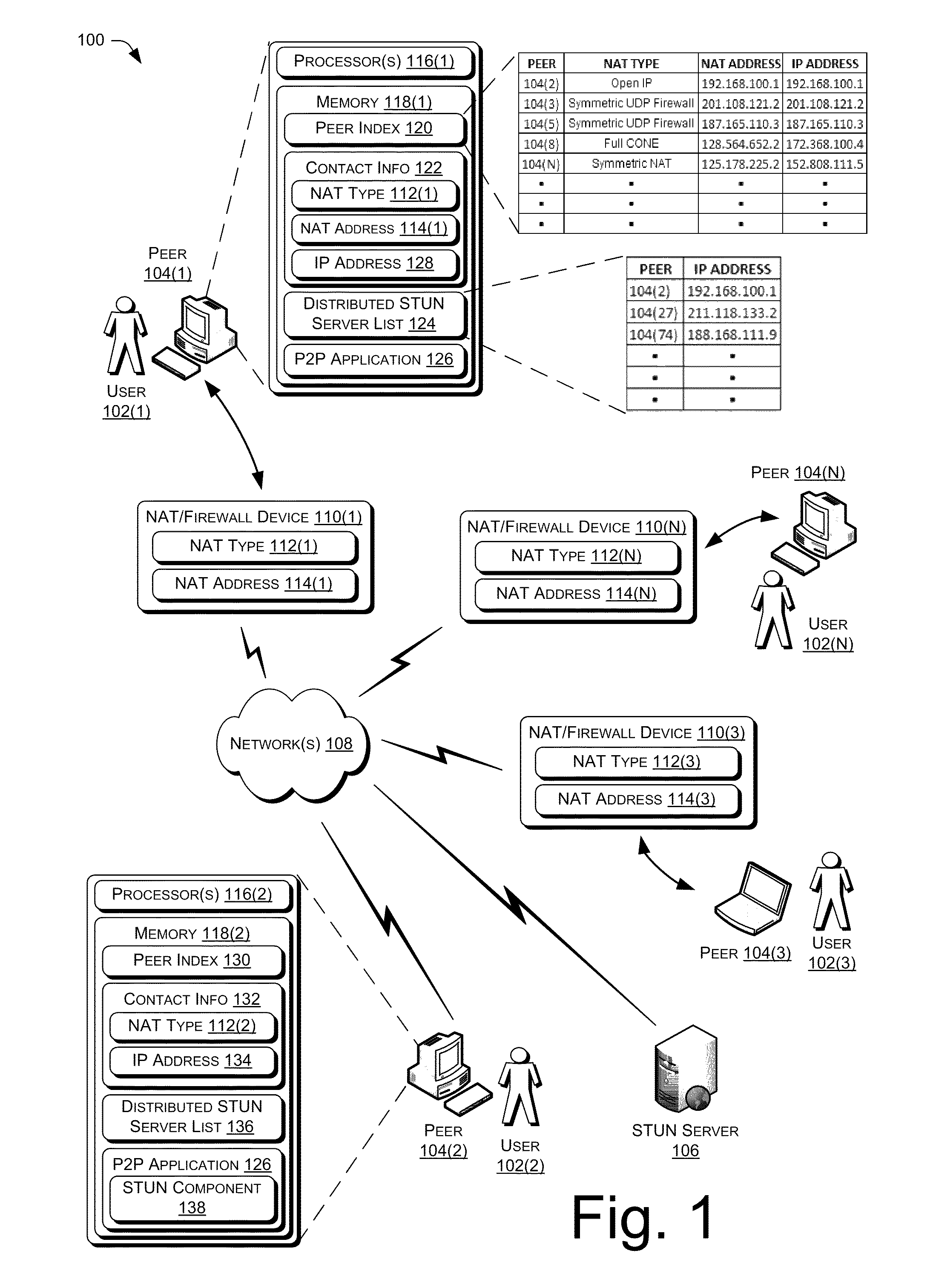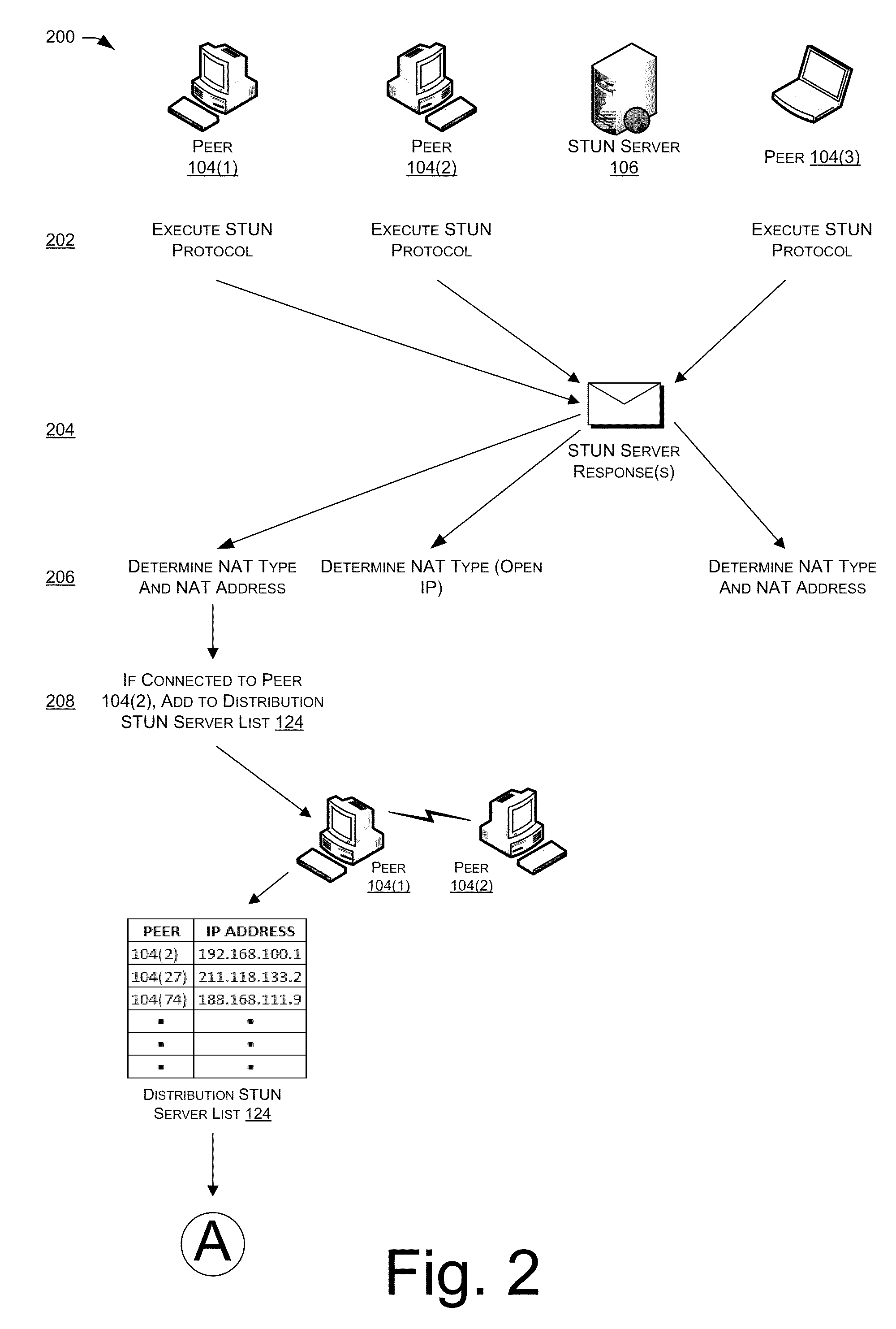Peer-to-peer network address translator (NAT) traversal techniques
- Summary
- Abstract
- Description
- Claims
- Application Information
AI Technical Summary
Benefits of technology
Problems solved by technology
Method used
Image
Examples
Example
The detailed description is described with reference to accompanying figures. In the figures, the left-most digit(s) of a reference number identifies the figure in which the reference number first appears. The use of the same reference numbers in different figures indicates similar or identical items.
FIG. 1 depicts an illustrative peer-to-peer architecture in which peers may use a public domain peer to connect with other peers. By doing so, the architecture lightens the burden placed on a Simple Traversal of User Datagram Protocol through Network Address Translators (STUN) server of the architecture.
FIGS. 2-4 depicts an illustrative flow diagram that includes a peer conducting a STUN protocol to determine the peer's Network Address Translator (NAT) type and address, sending the peer's contact information and a distributed STUN server list to other peers of the architecture, and connecting with another peer by leveraging a public domain peer of the distributed STUN server list.
FIGS. ...
PUM
 Login to view more
Login to view more Abstract
Description
Claims
Application Information
 Login to view more
Login to view more - R&D Engineer
- R&D Manager
- IP Professional
- Industry Leading Data Capabilities
- Powerful AI technology
- Patent DNA Extraction
Browse by: Latest US Patents, China's latest patents, Technical Efficacy Thesaurus, Application Domain, Technology Topic.
© 2024 PatSnap. All rights reserved.Legal|Privacy policy|Modern Slavery Act Transparency Statement|Sitemap



